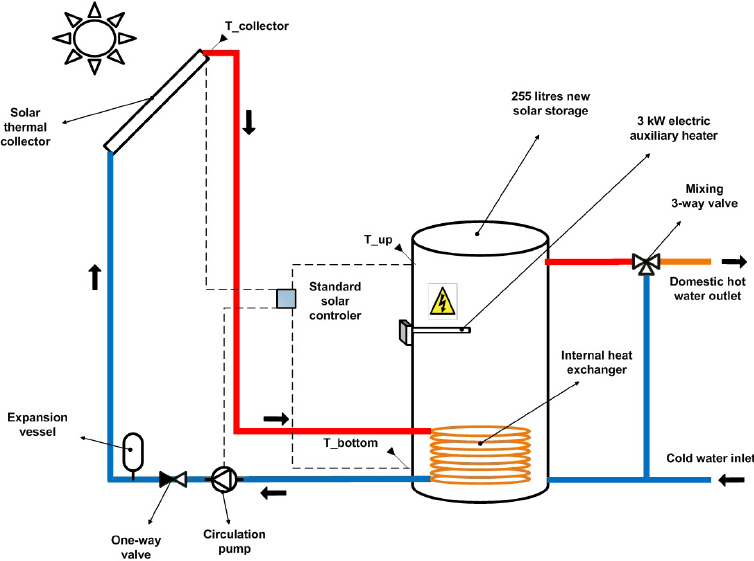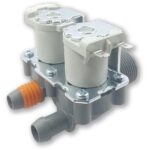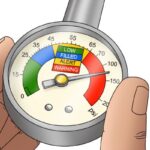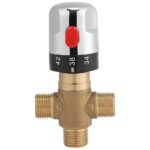Solar Water Heaters. Natural and forced circulation
The circulation system is one of the key parameters that determine the performance and operation of a solar water heater. The choice between natural and forced circulation depends on the user’s needs, the installation location, and how the system is used. Let’s take a detailed look at both options.
A) Natural Circulation

Natural circulation relies on the basic principles of heat and does not require the use of pumps or other mechanisms.
How It Works
Hot water naturally rises while cold water moves downward. That’s why the boiler is placed higher than the collectors.
- The water in the collectors is heated by solar energy.
- The hot water, being lighter, rises to the tank (boiler).
- Cold water from the boiler descends into the collectors to be reheated.
Advantages
- Simplicity: No pumps or complex components.
- Low maintenance cost: Due to the absence of mechanical parts.
- Independent from electricity: Ideal for areas without stable electricity supply.
Disadvantages
- Installation requirements: The tank must be above the collectors, limiting placement options.
- Reduced efficiency over long distances: Not efficient when collectors are far from the tank.
Recommended Use
Natural circulation is suitable for:
- Small systems.
- Homes where the collectors and boiler can be installed close to each other.
B) Forced Circulation

Forced circulation uses a pump to move the water, offering greater flexibility and efficiency.
How It Works
- A pump circulates the water from the collectors to the boiler and back.
- A temperature sensor controls the pump, activating it when needed.
Advantages
- Flexible installation: The boiler can be placed anywhere, regardless of collector position.
- Increased performance: Water circulation is more efficient, even over long distances.
- Ideal for large systems: Suitable for commercial or industrial applications. A large tank can be used that would otherwise be impossible to place, for example, on a tiled roof.
- Ideal when the building’s aesthetics do not permit the bulk of a standard solar water heater installation.
Disadvantages
- Installation cost: More expensive due to the pump and extra components.
- Needs electricity: Depends on a constant power supply, though it can also operate with backup batteries or photovoltaics.
- More maintenance: Due to mechanical parts requiring checks.
Recommended Use
Forced circulation is ideal for:
- Homes with installation placement restrictions.
- Apartment buildings or properties with high hot water demand.
Comparison Table
| Feature | Natural Circulation | Forced Circulation |
|---|---|---|
| Installation cost | Low | Higher |
| Independent from electricity | Yes | No |
| Efficiency over long distances | Reduced | Excellent |
| Installation flexibility | Limited | High |
| Maintenance | Minimal | More required |
Which Option Is Right for You?
- If you live in a single-family home with small needs and no available electricity, natural circulation is a simple and affordable solution.
- If you want installation flexibility, higher performance, or need to meet greater hot water demands, forced circulation is the ideal choice.
- Improvements in the Placement of the Data Logger - 29 January 2025
- Solar Water Heater Statistics – December 2024 - 10 January 2025
- Washing machines with dual water supply - 24 December 2024











